With the Mitsubishi EDiA XL, Mitsubishi Logisnext Europe (MLE) introduces a striking series of lift trucks in the 4 to 5.5 tonne capacity segment. The modern 5 tonne truck we tested scores a top score for productivity with remarkable agility. Its unprecedented nimbleness makes you think you’re on a 2.5 tonne truck, even though you’re really on a double.
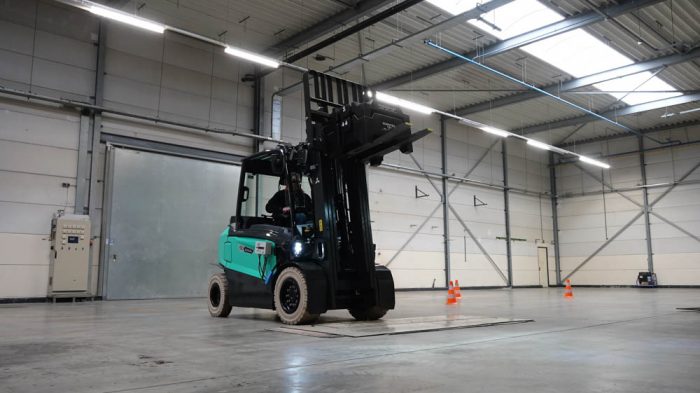
The new organisation ‘Logisnext’, formed after the global acquisition of UniCarriers, brings clarity and peace. Logisnext Europe can be seen as a ‘House of Brands’ with a specific channel for each brand. On a local level, various business units, such as ‘Logisnext Netherlands’ have been set up, where the Mitsubishi Forklift Trucks brand will be offered for all forklift and warehouse trucks. The Atlet and Nissan brands are phased out, and other brands are offered through specific dealer channels, on selected markets.
The range now includes more than 150 different models adorned in distinctive jewel green and featuring the three-diamond logo. The most recent development is the introduction of the line of electric forklift trucks from 4 to 5.5 tons, designed entirely in-house from the drawing boards in the design centre in Finland. The new line is now a 100% Mitsubishi product and no longer a third-party purchasing model. Time for a test run.
For our test, we have two trucks. A 5-tonne truck to work with and a 5.5-tonne truck to see some of the other options, such as a full cab and camera system for extra visibility. Both trucks stand out because of their modern appearance and neat finish. The trucks exude a mix of robustness and accessibility without being bulky.
That the truck is actually accessible is experienced when you get on. The step is spacious and safe to use. The large handhold on the roof pillar and the seat bar allow easy and safe access to the workplace. The large and flat floor plate offers sufficient space and the pedals are at the right height for a relaxed working position. As far as we are concerned, the black plastic step-on/step-off could be given a contrasting colour, for example by placing a stainless steel grille on it. This makes it easier to see where to put your foot when you get off the truck. It also gives the truck an even more robust appearance.
The workspace in the rubber-suspended cabin is neatly arranged with rounded corners throughout. From the air-suspension seat, you have a good overview of your workplace and working environment. The front roof pillars are remarkably slim for a 5 tonne truck and the dashboard is pleasantly low and bevelled. On the right-hand side of the truck, there are many storage compartments and trays for all sorts of things. There’s even a place to store goggles, something we haven’t seen on a forklift before. Whether it’s really meant to be there or not remains to be seen, as on the full-cabin truck the compartment is used for the switches of the heating system.
Our test truck has a handhold with horn on the rear roof pillar for extra grip and control when reversing. The chamfered counterweight also provides a good view of the road ahead, but this is partly lost due to the optional storage bin mounted in the middle of the counterweight. A box on the left side of the counterweight would be a smarter choice.
The three-section 4.5-metre mast with free lift and Bolzoni side shift offers good visibility thanks to the optimised routing of hoses and chains. The measured blind spot (visibility loss in centimetres from the ground to 2-metre lift height) is relatively large at 80 cm. Half of this is due to the combination of side shift with a sturdy fork carriage and a load rack that is not sight-optimised.
Mast operation is controlled by fingertip levers on the adjustable armrest. The functions are electrically controlled and could be a little more precise. We made the same comment in 2019 when we tested the Mitsubishi EDiA EM 1.4 tonne three-wheeler. According to the supplier, it is a setup issue and easy to adjust to your liking.
The speeds of no-load and loaded lifting are with 42 cm/sec the highest we measured in this segment so far. The mast cushioning between the mast sections and the end cushioning at maximum lift are in good order.
Central to the dashboard is the colour display that we have seen on previous Mitsubishi trucks. It is clear and informative, including an indication of the weight of the load on the fork. As a driver, you have a choice of two driving modes: Eco and Pro. You choose these with the ignition key; the first switch position is Eco, the second is Pro. Per choice, the service engineer can set three basic performance curves for you: soft, medium and hard. On our test truck, Eco mode is set to soft and Pro to medium. They directly affect the speed of acceleration and the amount of braking when you release the driving pedal.
Whatever the choice of mode, in both modes we find that the Mitsubishi is very quiet and steers and drives incredibly smoothly. At first you almost think it’s too nimble, but you soon get used to that. Even though steering is light as a feather, the Trelleborg non-marking tyres have excellent directional stability. The behaviour in bends is also very predictable. The automatic speed reduction ICS (Intelligent Cornering System) lives up to its name. And thanks to the individual drive of the front wheels, the large EDiA XL turns a pirouette around its axis without any effort.
Naturally, we drive consumption and performance measurements in both driving modes. We experience the Eco-mode as very controlled and modest. Acceleration is very gentle and the maximum driving speed eventually comes to just under 12 km/hour. When releasing the accelerator, the truck rolls out and we have to brake ourselves; here the medium setting would suit better. Despite the slow looking and feeling setting, we score almost the same productivity as other trucks on Eco mode in this segment. However, the EDiA XL’s energy consumption is 15% better than average, which brings the truck’s practical operating time to 11 hours and 22 minutes with the maximum 930 Ah/80V.
On the Pro stand the EDiA XL really comes alive. Despite the average curve, we sprint across our test track in record time – no truck in this segment has ever been faster in our publications. The maximum travel speed with load is over 15.5 km/h and that is fast enough. The automatic braking on the drive motors is just strong enough. The predictable driving behaviour helps us to achieve the highest productivity in this truck segment. Energy consumption is 8% below average and accounts for a practical operating time of 7 hours and 45 minutes with maximum battery capacity.
With the EDiA XL, Mitsubishi brings a modern, very smooth and pleasantly operating forklift truck to the market. It is quiet, manoeuvrable and predictable. The productivity is top and the energy consumption is favourable. Some of the criticisms we have can be easily dealt with: a slightly better adjustment of the mast metering, an extension of the hip belt catcher to make it easy to reach, more contrast in visibility in the entry/exit area… Less easy to achieve but desirable is a better view through the fork carriage and the load rack. All in all, as far as we are concerned, this newcomer scores a very high mark.
• Performance
• Smoothness
• Predictability
• Energy balance
• Contrast of vision on/off step
• Accessibility of hip belt buckle catcher
• Mast dosage settings
• Visibility through fork carriage/load rack
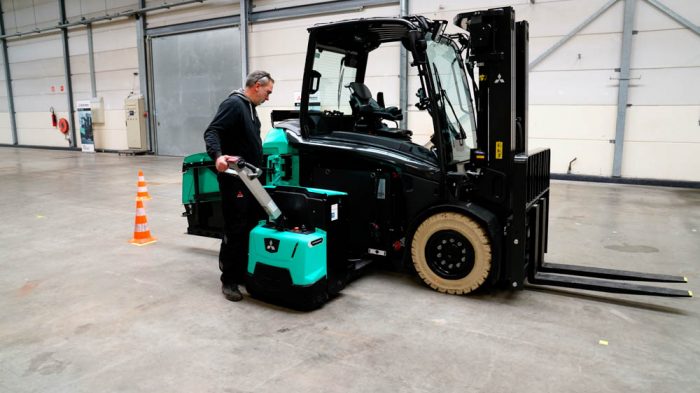
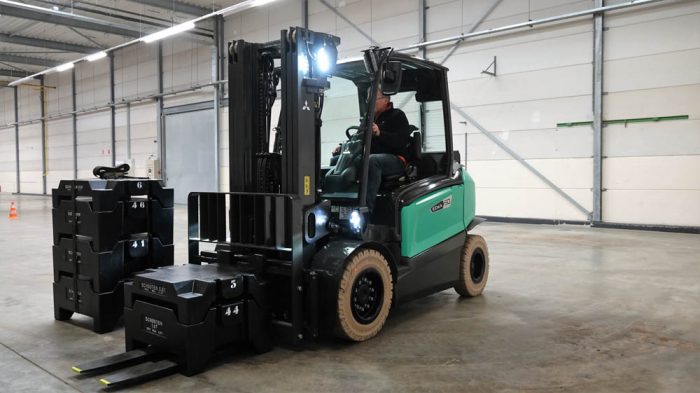


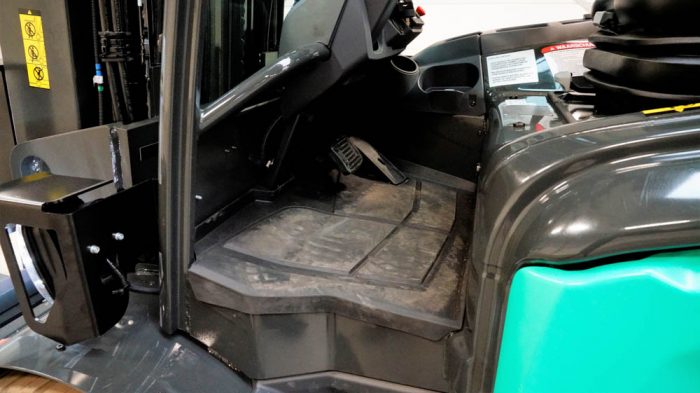
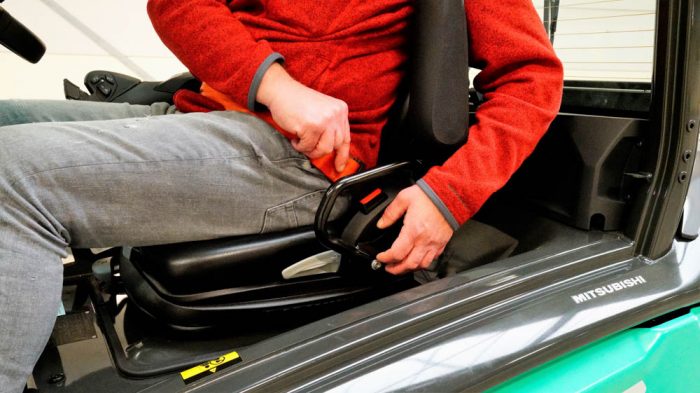
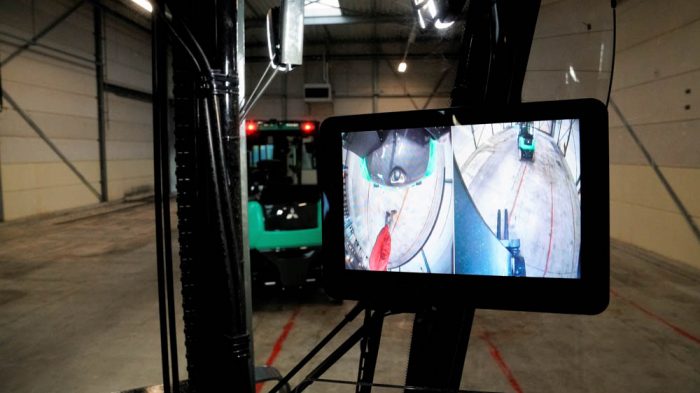
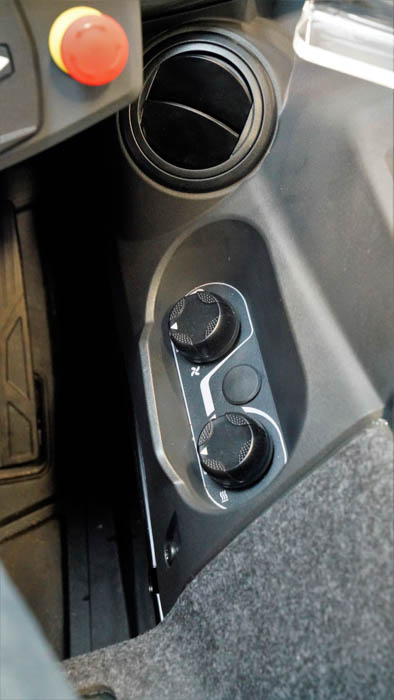
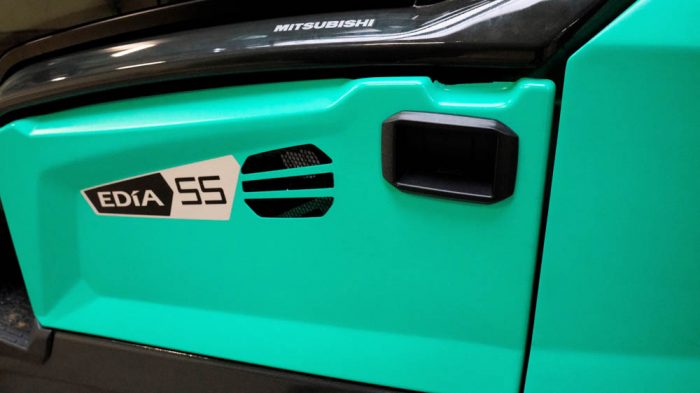
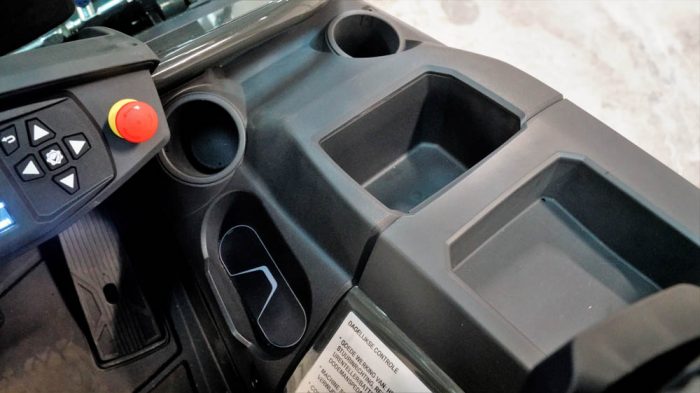

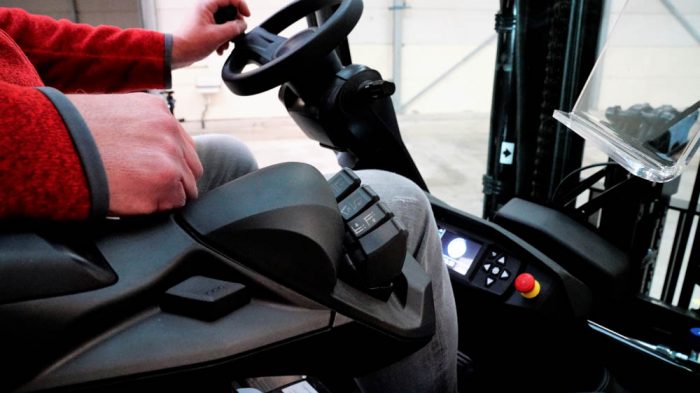
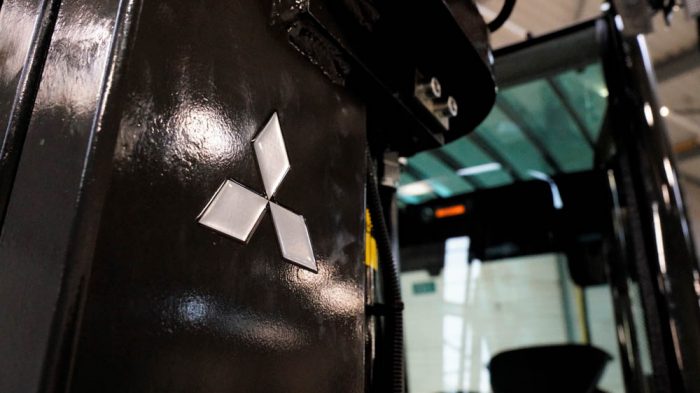

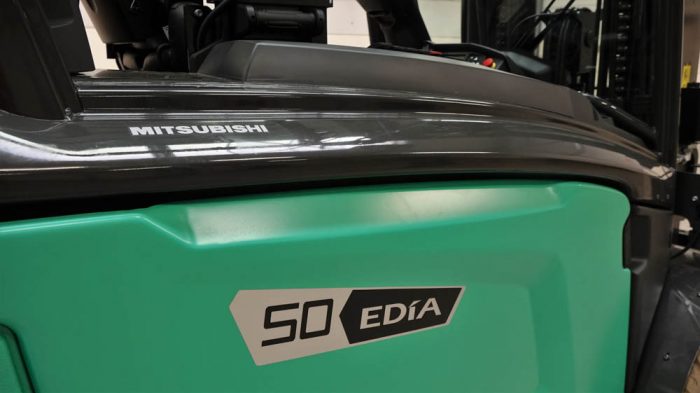
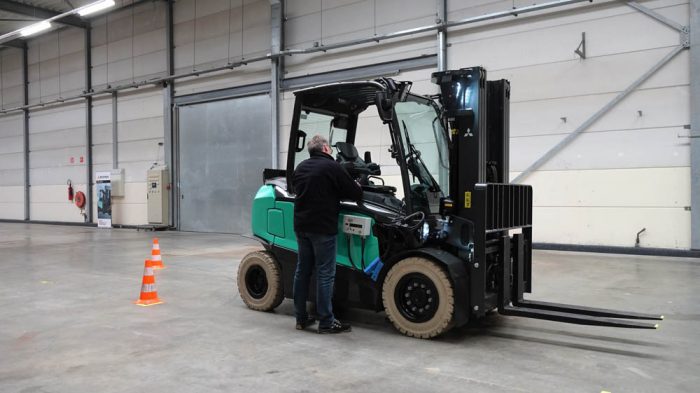
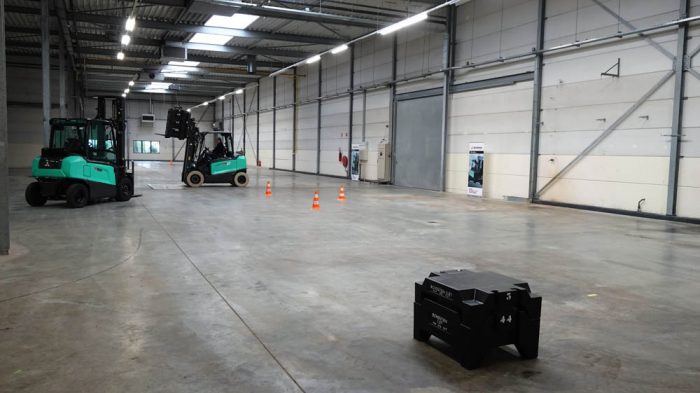

(Text and photographs Andersom Testing, Theo Egberts and Mark Dohmen)
Tags:
Andersom test, Andersom testing, Forklift test, Mitsubishi, Mitsubishi EDiA, Mitsubishi Forklift, Mitsubishi Logisnext Europe
Friendly Power House With the new EFG 4 Series, Jun...
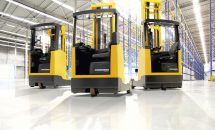
Safety versus Productivity: what wins? Warehouse truck...

New insights With the TX3-18L UniCarriers brings a wor...